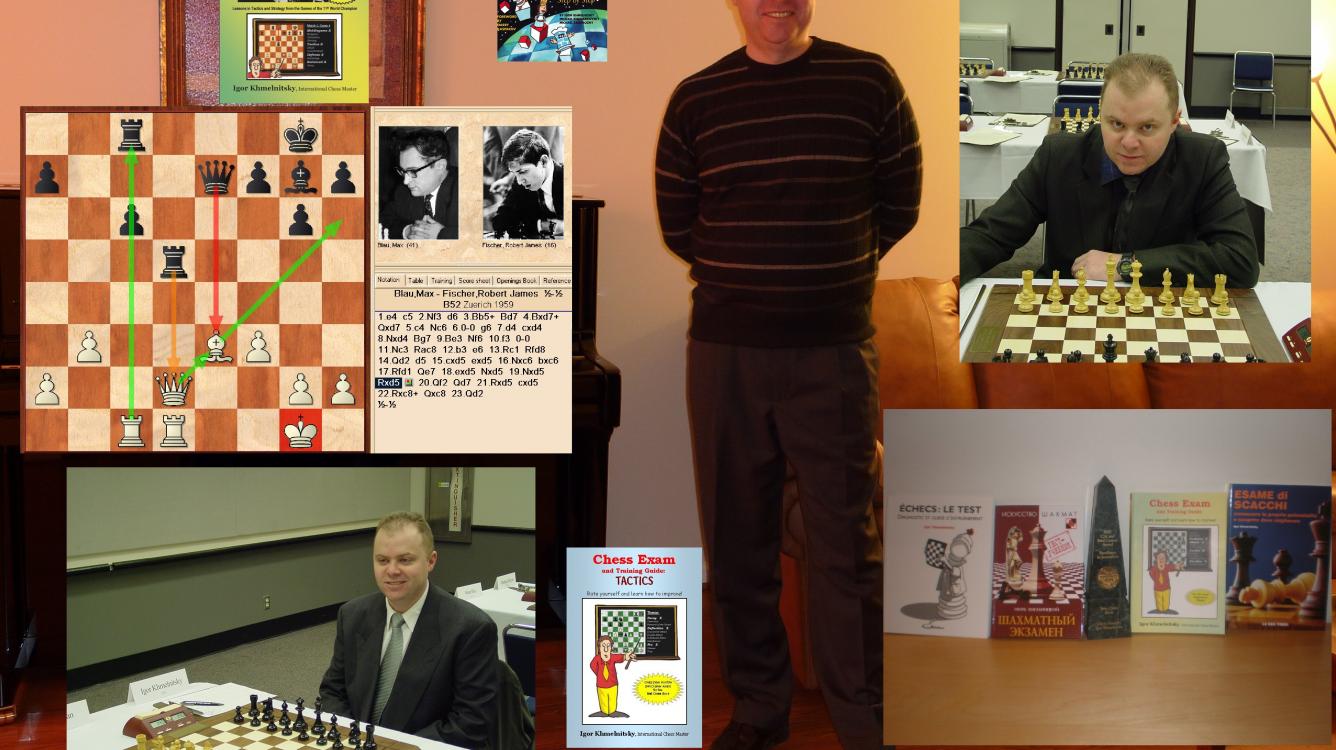
Igor's Chess Doubles - ICD #1
Igor's Chess Doubles (ICD) #1
I enjoy coaching! Early in my coaching career, I realized that in spite of 1000s of books being available on virtually every chess subject, certain training options are not available to those interested in improving. So, I frequently create my own exercises. For example, I came up with a testing mechanism, aimed at helping players or all levels to assess their skills and improve them. My Chess Exam books have been praised by critics and readers alike. I enjoyed creating them!
Now, I am foraying into a somewhat new territory – something that I have done for years in my private coaching sessions but haven’t publicized much. Specifically, I often take existing puzzles with defined objectives and turn them into something different, all via a miniscule change to the setup. I believe that this enhances the training by creating a setup which is much closer to a real game – when sometimes you have opportunities to reach an objective and sometimes you don’t. Often, this is caused by a subtle placement of seemingly irrelevant piece.
My students have been telling me they enjoy studying these special exercises, which are often focused on the subject we are covering, or an issue, I determined, the student needs to work on.
Below, you will see some examples. If you enjoy them, please comment and share this article with your friends. I will consider making this a regular series if I see a substantial interest.
Check these pairs of positions. For each pair –
- What is different between setups (A) and (B)? White is always at the bottom (a1 = bottom left corner)
- Would you rather have position (A) or (B), or indifferent? Make sure you have a good reason! You always have BLACK pieces, no matter who is to move.
Scoring: 1. 1 point for each pair; 2. 2 - 10 points, depending on complexity. Adjust your score, if your reasoning wasn't 100%. Maximum score is 22. How will you do? Invite your friends to compete.
Enjoy!
 |
#1 Easy (3) {A B} White to Move |
 |
 |
#2 Easy (2) {A B} White to Move |
 |
 |
#3 Moderate (6) {A B} White to Move |
 |
 |
#4 Moderate (7) {A B} Black to Move |
 |
For comments or permission to reprint please send inquires via email or this form. Also, please check monthly specials on Chess Exams.
Best,
Igor
Igor Khmelnitsky
Answers - 1. {A} moving Pa3 to Pb3 is NOT good for Black - drawn endgame is now a lost endgame. 3 points
2. {B} moving Pd5 to Pd6 is good for Black - stops 1.Qf3#; 2 points
3. {A} moving Kf7 to Kg7 is NOT good for Black. White has a nifty idea - 1.Rxb5, attacking the Qd6. After 1...Qxa3, White plays intermediate 2.Rb7+, then recaptures the Q on a3. With K on f7, Black has 2...Qe7, hence White can't play 1.Rb5. 6 points.
4. {A} moving Pb6 to Pb5 is NOT good for Black. Black's devastating 1...Nd4 could be met by 2.Rxd4 cxd4 3.Re7, and White is fine. But Black has a sly response - 2...Ph6! Once the Q retreats, White no longer has support for Re7, so Black can capture on d4, keeping the extra piece. With the Black P not on b6, however, White has 3.Qxc5, keeping the R safe. 7 points.
